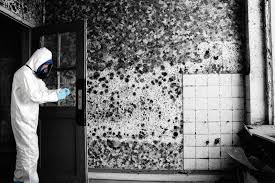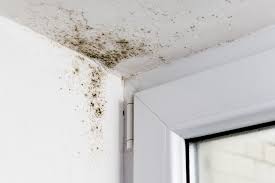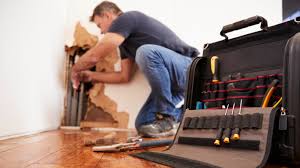How long does it take for mold to grow on wet drywall?
Even minor water damage can leave severe stains and damage on drywall. In some cases only minor maintenance is needed. Other times you will need to completely remove the damaged drywall and replace it. Water damage can come from a leaking roof or broken plumbing within the wall. It could also be from old or cracked drains. Even the smallest of leaks can leave nasty yellow stains. Repairing drywall can take some work but once water damage has occurred, it is important to do so right away.
How Long Does it Take for Mold to Grow on Wet Drywall?
Once drywall has come in contact with water it is a matter of time before mold or mildew will begin to set in. In fact, mold spores can germinate after just 12 hours in some conditions. Drywall is extremely porous and traps moisture very easily. When it becomes damp or wet, settled spores can quickly become growing molds. Depending on the type of mold, it may colonize in 1 to 12 days. If you react quickly enough to the water exposure, you can use bleach or a mold and mildew detergent to slow down the mold or mildews development. Moisture trapped in the drywall or sheetrock also deteriorates it and after some time the drywall will begin to crack and break down.

Conditions for mold growth
Water in your home or building is a disconcerning thought and for good reason, unattended moisture an lead to mold growth.
Mold needs four things to grow:
- Moisture (liquid water)
- Food (typically starch or sugar)
- Temperature between 41° and 104°
- Oxygen
The conditions of temperature and oxygen are almost always met in an indoor environment. Food sources can easily be found in the paper backing of the drywall or even in particles in the water making the addition of moisture into the wall cavity something that should be addressed right away.

Steps to prevent mold growth
Weather the water damage is the result of a storm surge or a leaky faucet, when water is trapped behind walls or paneling, the elements needed for mold growth will most likely be present. It is best to take action at this time to mitigate the damage and prevent mold growth from occuring.
Dry areas immediately. Try to clean and dry areas subjected to water within 48 hours to help prevent mold growth.
Be aware or warning signs. After cleaning and drying, continue to be sensitive to musty odors in the affected area.
Take look outside. Check the exterior of homes and buildings regularly for accumulating ground water. When the ground is saturated mold can begin to form outside and find its way inside. If water is accumulating against your foundation, take measures to drain the water away from your building. Keeping things dry is the key to preventing mold growth.
Remove damaged materials. If materials are wet and can’t be cleaned or completely dried, remove them from the building and replace them with new materials which may be more mold resistant. Fiber glass doesn’t have the food needed for mold growth but often when insulation gets wet, the water which intruded into the cavity was dirty and brought food along with it.

A Mold Growth Timeline
In the wake of a sudden in-home water leak, most folks are pretty preoccupied with the process of containing and diverting the problematic water. Once that job is done, most people feel satisfied that their work is complete, especially after proper repairs have been made. But if any walls, floors, or ceilings became saturated during the leak, there is a decent chance that mold may try to take up shop there in the coming days.
After 24 hours: Specifically, most types of common in-home molds (cladosporium, penicillium, alternaria, and aspergillus, according to the CDC) can land on a suitable surface and germinate with as few as 24 hours. At that point, there will not be any obvious signs that mold spores are present in the area. Because mold spores are fairly contained at this stage, it is often the best time to eliminate them through cleaning with diluted bleach.
After 12 days: However, if the mold spores are not detected during the germination stage, they are prone to colonize in as few as 3 days, with most types of mold gaining stable footing by 12 days post-germination. Even at this stage, mold may not be visible to the eye on the afflicted surface. However, mold spores at this stage can begin to spread more effectively if the air in the area is not properly dehumidified.
After 18 days: Once you pass the 18 day threshold, you will almost certainly see the visible signs of mold begin to crop up on the afflicted surface. While the precise appearance may vary, most mold types are recognizable due to their dark color and spotty appearance. At this point, any cleaning of the afflicted surface will need to be far more thorough and accompanied by proper airway protection.
All of these time frames are estimates, however, with specifics for mold growth speed based primarily on the surface’s temperature, the surrounding air temperature, the level of moisture in the surrounding air, and the amount of airflow in the afflicted space. Controlling each of these factors after a major water leak is often the best way to prevent mold from taking hold in your home.
Areas Most At-Risk For Mold Growth
When it comes to identifying and abating mold in your home, one of the most important steps is to isolate areas that are at the greatest risk for mold growth. Generally speaking, these areas are most often those that contain a lot of natural moisture or have been exposed to an excessive amount of moisture due to a roof leak or pipe burst. However, other types of environments are more likely to foster mold growth than those in warm, dry, well-lit areas.
Mold spores are more likely to come to rest on and colonize surfaces made from natural fibers, including cotton, wool, paper, leather, and wood.
Meanwhile, inorganic surfaces covered in organic material, such as food, grease, or soil, are likely to encourage mold growth as well.
Also, mold doesn’t need light to thrive. In fact, darker areas with less air flow tend to be ideal homes for mold spores. Even if improved conditions are temporarily introduced, spores can become dormant until ideal conditions for growth return.
Though it’s not an exhaustive list, these are some of the common in-home areas where mold tends to accumulate due to their natural conditions:
- Basements
- Crawlspaces (particularly those built over uncovered earth)
- Laundry Rooms
- Attics (consider roof ventilation)
- Under Cabinets – Check out our guide on waterproofing cabinets.
- Drywall
- Behind baseboards
- Tile
- Grout and caulking